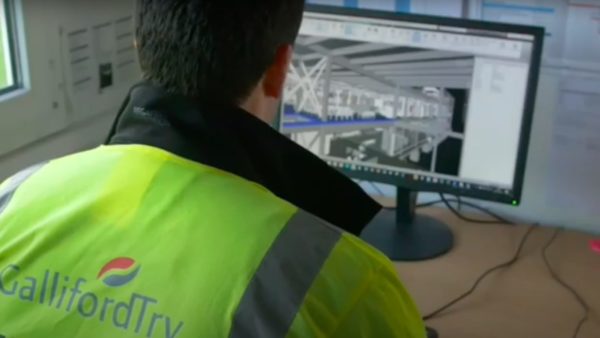High Speed 2 will launch a BIM online supplier learning platform to coincide with the invitation to tender for the main civils contracts in about a month’s time.
Speaking to BIM+, director of BIM at HS2, Jon Kerbey, said the project’s e-learning portal (previously referred to as the Digital Learning Campus) is being developed to help supply chains respond to its Employer’s Information Requirements at the level of detail needed to achieve Level 2 BIM in line with the government mandate.
Kerbey commented: “The online resource will clearly set out our BIM requirements, our strategy and objectives and make everything very HS2 specific, not just ‘generic BIM’. It will cover the first batch of educational content we think the supply chain will need to understand what’s required, the benefits we think we can get from BIM and how the supply chain can help us achieve them, including information on things like processes and the information delivery cycle.”
As a non-departmental government agency, HS2 is not bound by the mandate, but made the decision to pursue Level 2 compliance to drive value.
HS2 is also working with the BIM Task Group, and other organisations, to take a section of the HS2 project through the full BIM lifecycle in a “virtual exercise” designed to identify any skills and knowledge gaps and how to fill them.
“The exercise should be really rewarding in terms of highlighting where we need to focus our effort,” said Kerbey. “It will involve geometric modelling, data procurement, understanding supply chain capabilities and their ability to respond to a BIM Execution Plan, plus how we validate our data requirements against it.”
The pilot will run the full project lifecycle, assessing data handover into operations and maintenance to ensure the data meets HS2’s operational requirements, he added.
An HS2 BIM Supply Chain Upskilling Study, produced by Mace in mid-2014, concluded that 94% of the supply chain was already using BIM, 60% had a BIM strategy with defined goals, 71% were making financial provision for BIM, and 60% were working to a BIM standard.
Kerby added: “Since the study was published we have seen some good examples where projects and organisations have baked BIM processes into their ways of working, their management systems and their ISO9001 quality management process. There has been a drive to raise awareness and educate and train users in holistic and role-based approaches. Many now understand that clients are going to start asking for BIM and are taking steps to address it.”
It will be a decade before phase 1 of HS2 goes into operation, and 17 years until phase 2 begins, so a key concern was to decouple the data requirements from software and technology, which could change significantly over time, said Kerbey.
“If we worry about the data and get a good grasp on that and the data structures, then the technology can change over the top,” he said. “The target for BIM Level 3 by 2025 will come during the project lifespan, which is another complexity we had to build in.
“We have to make sure we almost future proof our contracts, although we are essentially procuring with Level 2 in mind, we need to make sure we take advantage of Level 3 concepts, principles and objectives when we reach that date.”

The online resource will clearly set out our BIM requirements, our strategy and objectives and make everything very HS2 specific, not just ‘generic BIM’.– Jon Kerbey, HS2















